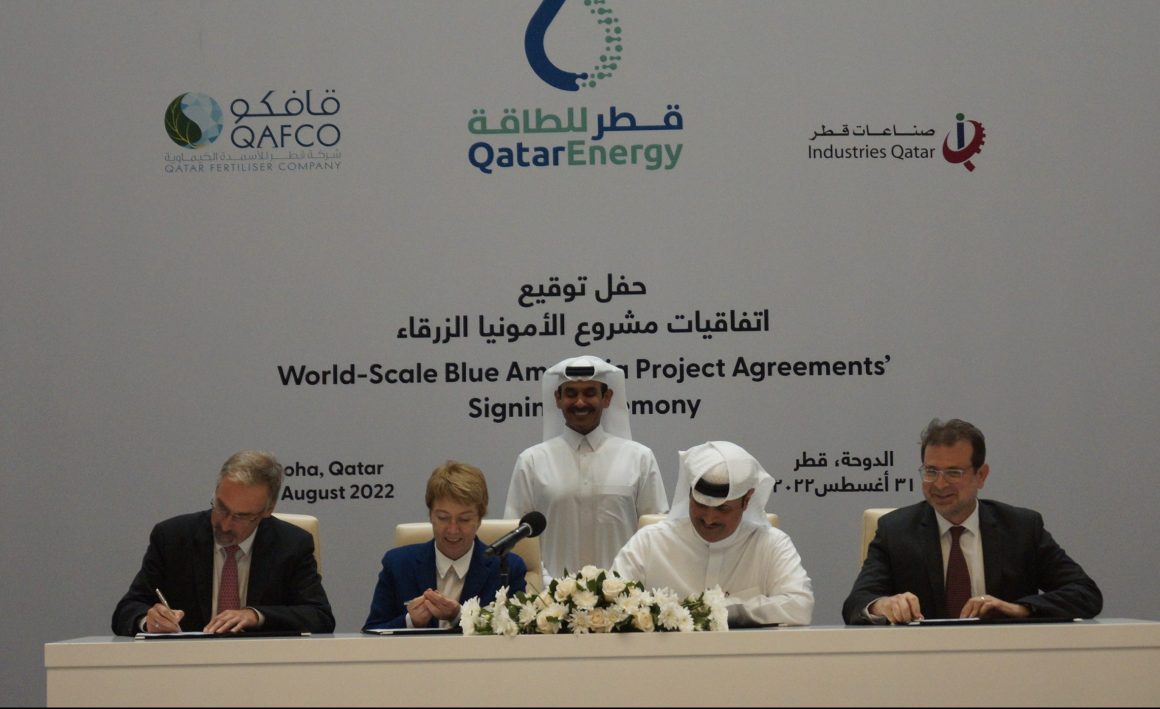Blue ammonia is created in the production process of regular ammonia. When CO2 is generated in the process.
QatarEnergy Renewable Solutions and Qatar Fertiliser Company (QAFCO) inked a major agreement on Wednesday over the development of the Blue Ammonia project, the largest of its kind in the world.
The Ammonia-7 project is set to produce 1.2 million tonnes per annum (MTPA) of Blue Ammonia, making it the largest of its kind and the industry’s first world-scale facility.
The production is expected to commence in the first quarter of 2026 and is located in Mesaieed Industrial City (MIC).
“This facility will provide a low-carbon energy solution to our customers on our journey towards a sustainable future,” said QatarEnergy’s CEO Saad Al-Kaabi during the announcement in Doha.
Blue ammonia is created in the production process of regular ammonia. When CO2 is generated in the process, it produces blue ammonia, which is primarily made of hydrogen.
Qatar’s minister of state for energy affairs noted its affiliate company is already building facilities that would capture up to 1.5 million tonnes of CO2 on an annual basis, powering the Ammonia-7 facility with 35 megawatts of electricity.
Meanwhile, the engineering, procurement, and construction contract (EPC), worth one billion US dollars was awarded to an associate company of the ThyssenKrupp and Consolidated Contractors Company.
For 50 years, QAFCO, 100% owned by QatarEnergy, has produced ammonia and urea in the Gulf state. The landmark project also adds to the energy company’s efforts in promoting renewable energy and carbon capture solutions.
“Our investment in this project speaks to the concrete steps we are taking to lower the carbon intensity of our energy products and is a key pillar of QatarEnergy’s sustainability and energy transition strategy,” said Al-Kaabi.
The project also comes amid a demand for fossil resources, especially in seeking sustainable solutions for global energy challenges. The project also falls under the Gulf state’s goals to capture more than 11 million mtpa of CO2 by 2035.
“The world will continue to need fossil fuels for some time and it is our responsibility to do this wisely,” added Al-Kaabi.
